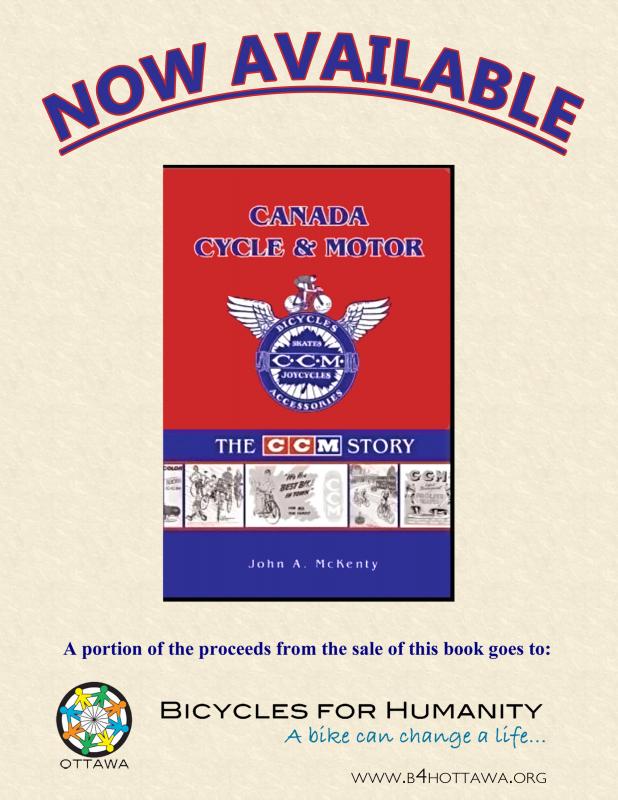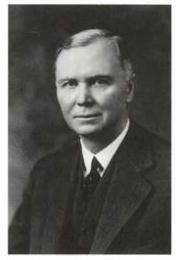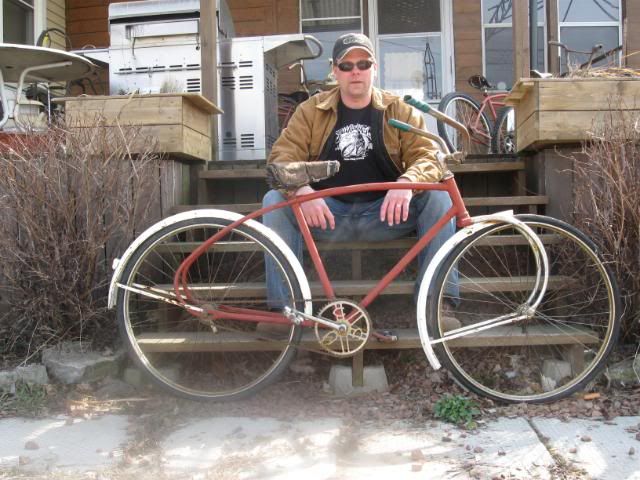Archives
Born in 1877, Tommy Russell grew up on a farm in southwestern Ontario. After graduating from the University of Toronto, where he excelled as both an athlete and a student, Russell went to work for the Canadian Manufacturers' Association. He would deliver the Association's condolences upon the death of Walter Massey in 1901.
When Canada Cycle & Motor (CCM) continued to struggle following the death of Massey, the company directors approached Russell about the possibility of managing the faltering enterprise. In 1902 Russell was named general manager of CCM, a role he held until being named company president in 1916. Russell would remain president until his death in 1940.
By the end of 1903 Russell had CCM showing a profit and by the end of 1905 had introduced two new products to the company line - the Russell motor car and skates made of automobile steel (aptly called Automobile Skates). In 1916, under Russell's guidance, CCM built a new state-of-the-art factory on Lawrence Ave. in Weston, ON.
Russell never strayed far from his rural roots and in 1910 bought a forty-acre farm in Downsview where he began to breed shorthorns just as his father had before him. Russell would eventually expand "Brae Lodge", as he called it, to 650 acres and begin to show his steers at the Canadian National Exhibition (CNE) and the Provincial Winter Fair in Guelph.
While the early directors of CCM were, for the most part, a mysterious lot of milionaires who knew far more about making money than they did about making bicycles or motor cars, Tommy Russell, the farm-boy from Exeter, was the company's human face. Held in high regard by employees and dealers alike, Russell was often seen walking through the plant, talking to the workers and taking a genuine interest in what they were doing.
CCM would never fully recover from the loss of Russell in 1940. The ensuing gulf between employees and management would forvever cloud contract negotiations and the things that Russell had valued so highly - the long-term assets of the company - its workers, its plant, its equipment, would be lost in a maze of backroom bickering and deadly greed.
More than anyone Tommy Russell had maintained a clear vision of what CCM was all about. For Russell it was about co-operation or what he called "shared responsibility." It was, above all else, a commitment "to give the public a good article at a fair price and to give to the working man the fullest share possible of the returns which they helped produce." It was this pledge that made the Russell years the golden years at CCM.
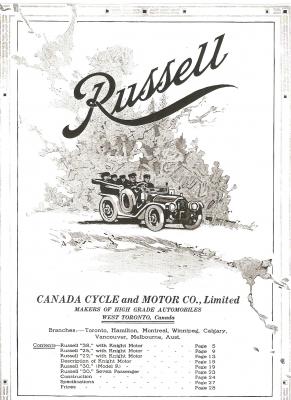
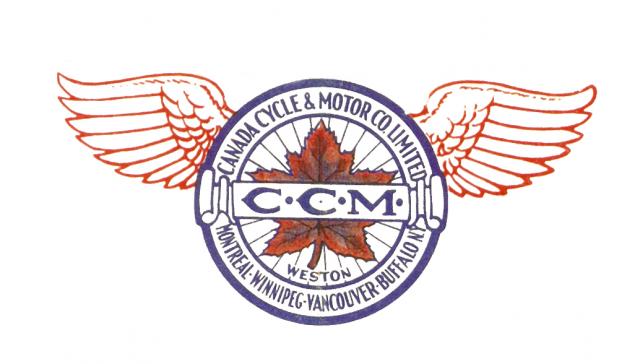
THINK CANADIAN HISTORY IS DULL? THINK AGAIN.
Think of Walter Massey. By the end of the 19th century, his family’s manufacturing concern was the largest of its kind in the British Empire. When he heard Hartford's huge American Bicycle Co. was headed to Canada, he helped buy Canada’s four largest bicycle makers and merge them with his own to form CCM. Not only did CCM beat back the American intruders, it bought them out.
Think of Louis Schwitzer. A graduate of the Imperial Artillery Academy in Vienna, Austria, Schwitzer designed CCM’s popular Russell motor car. Following his time at CCM, Schwitzer gained fame when he won the first race staged at the Indianapolis Motor Speedway on August 19, 1909. He went on to design the “Marmon Yellow Jacket” engine which powered the winning car in the first Indy 500.
Think of Willie Spencer. During the 20s Spencer on a CCM Flyer was one of the world’s top bicycle racers. When Spencer couldn’t come to terms with John Chapman, America’s “Czar of Racing,” he established his own circuit of racers. Dubbed “Willie’s Outlaws” by the American press, Willie’s riders challenged Chapman’s to a grudge match. When Willie’s crew won the race, as well as a rematch at Madison Square Garden, Willie was given a substantial financial settlement and asked to return to Canada.
Think of Torchy Peden. During the thirties Peden was the dominant racer on the six-day bicycle racing circuit. So popular was the red-headed giant that he became one of the world’s highest-paid athletes, earning even more than Babe Ruth and Lou Gehrig of the New York Yankees. CCM eventually presented Torchy with a gold-plated version of his CCM Flyer.
Think of Bill Shaw. Shaw was the CCM engineer who developed the plastic tip for the back of the skate blade. Designed to reduce injury, the innovation was introduced by Red Kelly of the Toronto Maple Leafs in the 59/60 season. Shaw would go on to help develop the IMAX projection system. His original projector would find a home at Ontario Place in 1971 and Shaw would receive several awards for his work including an Oscar for scientific and engineering achievement in 1986.
Think of Bobby Hull. During the sixties, the “Golden Jet” was hockey’s marquee player. Although Hull endorsed Bauer skates he wore CCM skates. In 1968 Hull made it official when he signed a five-year endorsement deal with CCM. One of the most lucrative contracts in all of sports at the time, it landed Hull on the cover of Time magazine and CCM president Tom Nease in a lot of hot water.
Think of the Mafia. Yes, the Mafia. In the sixties and seventies when a fierce boardroom battle was waged for control of CCM, the combatants in the struggle looked for back-up in the most unlikely of places.
Think Canadian history is dull? You’ll be surprised.

Canada Cycle & Motor Ltd. was founded in 1899 by Walter Massey (1864 - 1901), President of the Massey - Harris Manufacturing Co. of Toronto, ON. In 1896 Massey had introduced the manufacture of bicycles into the product line of a family company previously best known for its farm machinery. Using his company's vast distribution and sales network, Massey was soon shipping his company's Silver Ribbon bicycles across Canada and throughout the world, including Australia and New Zealand.
Upon hearing that the massive American Bicycle Co. (Columbia), based in Hartford, Mass., was headed to Canada, Massey decided the only way to compete with such a large company was to merge some of Canada's smaller bicycle companies into one large one. To help him accomplish the task, Massey enlisted the aid of fellow Methodists - Joseph Flavelle (Robert Simpson Co.) and George Cox (Canada Life), as well as business associates Warren Soper (Dunlop Tire Co.) and E.R. Thomas (H.A. Lozier & Co.).
The syndicate, as they were known, bought Canada's foremost bicycle makers at the time including the Welland Vale Manufacturing Co. ("Perfect") of St. Catharines, ON, the Goold Bicycle Co. ("Redbird") of Brantford, ON, the Gendron Manufacturing Co. (Reliance") of Toronto and the H.A. Lozier Co. ("Cleveland") based in Cleveland, Ohio, but with a large branch plant located at the Toronto Junction. In 1899 the gentlemen merged the four companies with the Massey-Harris bicycle works to form one company - the Canada Cycle & Motor Co. Ltd.





